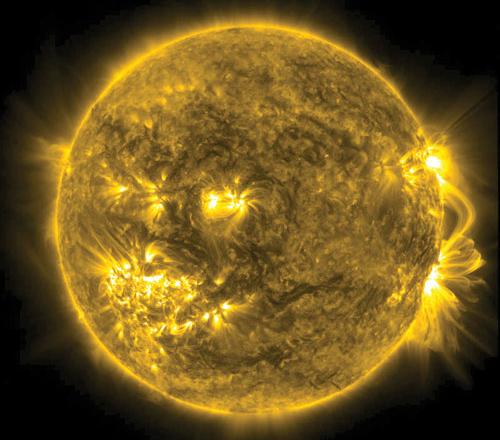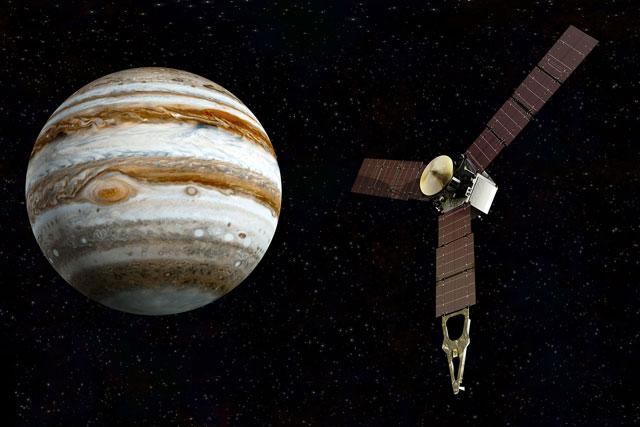You are here
Mystery of sun’s corona solved? It’s nanoflares, scientists say
May 05,2015 - Last updated at May 05,2015

Los Angeles Times (TNS)
One of the greatest mysteries of how stars behave has been right in our own backyard: the sun’s corona. Scientists have long wondered what heats this thin, ethereal shell of particles to roughly 300 times the temperature of the surface of the sun itself.
Now, after combining evidence from a sounding rocket and a black-hole-hunting telescope and computer modelling, researchers say they’ve found the cause: nanoflares.
“We have for the first time direct proof that nanoflares exist and heat the corona,” said Jim Klimchuk, a solar scientist at NASA’s Goddard Space Flight Centre in Greenbelt, Md. “This proof takes the form of superhot plasma... it’s a real breakthrough.”
The findings, described at the first Triennial Earth-Sun Summit meeting underway in Indianapolis, may help solve the decades-old mystery of what powers the corona and help scientists better predict the effects of space weather on Earth.
The solar corona, the sun’s outer atmosphere, is so incredibly faint that it can only be seen with the naked eye during a solar eclipse, when the moon completely blocks out the sun’s bright body, leaving only the corona’s ghostly glow.
While the sun’s surface is around 10,340 degrees Fahrenheit, the corona, which extends high above the sun’s surface and into space, sports temperatures of around 4 million degrees, and can even hit 18 million degrees in some spots. Scientists have been stumped when it comes to explaining how this wispy shell of gas so far away from the sun’s blazing core can get superheated to such extremes.
Researchers have long suspected that nanoflares exist and might account for the corona’s mysterious heating source, but they haven’t been able to prove it. Nanoflares, so called because they’re one-billionth the size of typical solar flares, are still powerful, packing the equivalent energy of a 10-megaton hydrogen bomb. While they’re small by the sun’s standards, there are so many of them — millions going off each second on the sun’s surface — that they have the potential to heat the corona to its incredible temperatures.
The problem for researchers is that nanoflares are so small and brief that they’re hard to pick out against the overwhelming brightness of the sun. But now, researchers working on different lines of inquiry each say they’ve found strong evidence that nanoflares exist.
To get a better look at the sun, scientists flew a sounding rocket equipped with an instrument called the Extreme Ultraviolet Normal Incidence Spectrograph for 15 minutes, looking for signs of super-heated gas (around 9.9 million degrees Celsius). Using this instrument, lead scientist Adrian Daw, a solar scientist at Goddard, was able to find those bits of gas, which scientists say are heated to those extreme temperatures by the nanoflares.
“That superhot plasma emission that we’re seeing there is the smoking gun of nanoflares,” Daw said.
Scientists also used NASA’s NuSTAR telescope to look for evidence of nanoflares. NuSTAR is used to study the X-rays coming from black holes, among other high-energy phenomena, but it can also be used to study X-ray emissions coming from regions of the sun where normal-sized flares could not be detected. These regions were popping with X-ray energy, a sign that nanoflares were at work, Iain Hannah, an astrophysicist at the University of Glasgow in Scotland, said in a media briefing in Indianapolis.
The scientists think these nanoflares are caused by the twisting and breaking of magnetic field lines around the sun, Klimchuk said, though it will be a while before they can probe exactly how the nanoflares work.
Tracking how nanoflares might contribute to the space weather that reaches Earth is very important, he added, because such solar radiation can disrupt terrestrial technology, including weapons guidance systems, navigation systems and anything that involves radio transmissions.
“We need to understand how these hot plasmas are created and produce these X-rays and UV radiation so we can better understand and prepare for their effects here on Earth,” Klimchuk said.
Related Articles
PASADENA, California — Braving intense radiation, a NASA spacecraft reached Jupiter on Monday after a five-year voyage to begin explor
PARIS — It could be raining diamonds on planets throughout the universe, scientists recently suggested, after using common plastic to
PARIS — Planetary-scale engineering schemes designed to cool Earth’s surface and lessen the impact of global heating are potentially dangero


















